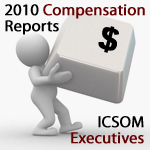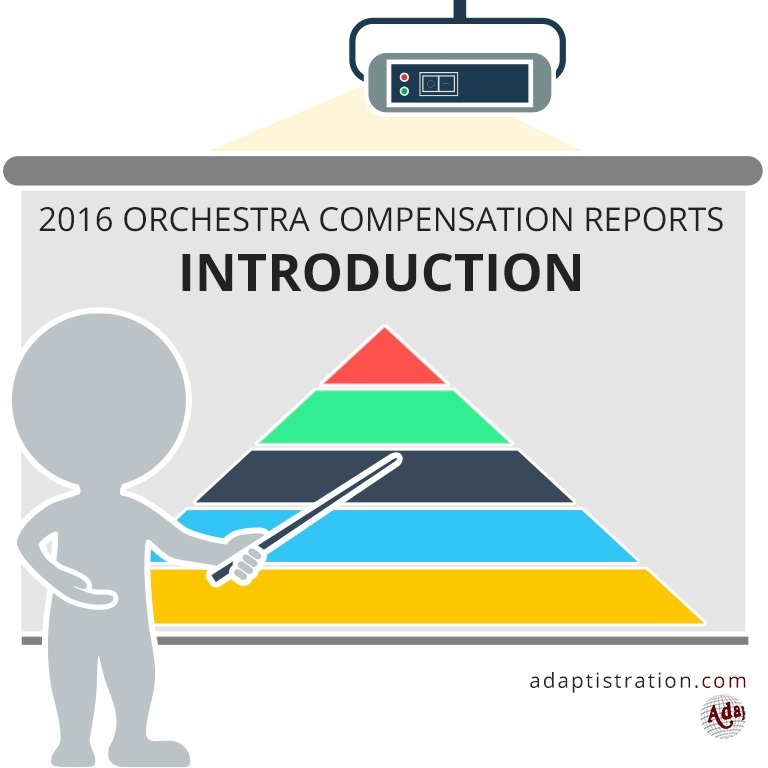If you were the CEO or Executive Director for an ICSOM orchestra in the 2007/08 season, odds are you enjoyed the largest single increase in compensation in recent history. Taken in context, the 2007/08 season was the height of the economic bubble and clearly, most orchestra executives didn’t miss out on the benefits associated with the rise of the executive class…
WHERE THE DATA COMES FROM
 In order to provide information that is as accurate as possible, data from the 2007/08 season is gathered from the following sources:
In order to provide information that is as accurate as possible, data from the 2007/08 season is gathered from the following sources:
- Executive compensation figures were obtained from their respective orchestra’s IRS Form 990 for the 2007/08 concert season.
- Total Expenditures were also obtained from each respective orchestra’s IRS Form 990 for the2007/08 concert season.
- Base Musician compensation figures were obtained from records collected by the American Federation of Musicians (AFM) and International Guild of Symphony, Opera, and Ballet Musicians (IGSOBM, Seattle) for the 2007/08 concert season.
Adaptistration makes no claim to the accuracy of information from documents compiled or reported by external sources. If you have reason to believe any of the information is inaccurate or has changed since reported in any of the above sources and you can provide documentation to such effect, please feel free to submit a notice.
WHAT THE NUMBERS DON’T SHOW
It is important to remember that the numbers shown do not always convey a complete compensation picture. For example, an orchestra executive may have had a large increase in salary due to a contractually mandatory severance or deferred compensation package. Additionally, if any executive was not employed for a full season, the documents used to gather this data do not indicate how much of the season the individual received a salary. As such, the cumulative compensation may artificially inflate annual earnings. Conversely, reported figures may not reflect bonuses or other incentive payments and may therefore underreport what executives actually earn; therefore, the cumulative compensation for executive directors may or may not be more than what is listed.
The “Base Musician” compensation figures do not include any additional payments including, but not limited to, outreach services and minimum overscale and/or seniority payments. Finally, these figures do not include any of the opera, ballet, or festival orchestras which are members of ICSOM or IGSOBM.
REAL AVERAGES
In order to obtain a clearer picture of changes in average compensation, compensation data from orchestras that did not pay an executive for an entire season or paid an incoming and outgoing executive in the same season are factored into a “real average.” Although this is not a definitive figure, it does assist in proving a more comprehensive picture of compensation.
When applied to this year’s data the average change in executive compensation goes from 21.44 to 15.93 percent. When compared to last year’s real average of 13.17 percent, this season’s drop is due in large part because of the gap between those cumulative and real averages.
TOP 10 EARNERS AND QUICK FACTS
- For the first time in the history of orchestra executive compensation, one executive’s compensation not only exceeded the $2,000,000 mark but more than doubled the previous season’s all time high.*
- 40 percent of the Top 10 highest paid executives for the 2007/08 season were women.
- The average annual compensation for the Top 10 highest paid executives for the 2007/08 season was $809,410, a 36.72 percent increase from the previous season.
ARE HINDSIGHT AND CONTEXT MUTUALLY EXCLUSIVE?
As was mentioned in the onset of this report, executive compensation levels for the 2007/08 season are representative of attitudes dominating the height of the economic bubble. At the same time and shortly after the economic downturn, a number of executives voluntarily implemented cuts to their own compensation as a first step toward enacting pay cuts throughout the entire organization.
A common approach in that cost control practice has been to espouse a policy of shared pain, meaning all stakeholders should absorb equal percentage cuts. So if the CEO takes a 10 percent pay cut, so should the majority of staff and artistic stakeholders. That very notion was presented here at Adaptistration as a recommend practice in an article from January, 2009 entitled A Meaningful Approach To Concessions.
At the same time, it is beneficial to consider cuts in a dynamic perspective. For instance, if an orchestra’s CEO and musicians agree to accept matching reductions in compensation, it is fair to examine the past several years of changes in compensation in order to compensate for spikes in either direction.
Ultimately, an organization’s stakeholders will need to determine if this historical perspective has any impact on whether or not the purported equal pay cut is indeed, equal. Likewise, executive board members would benefit from taking these variables into consideration not only during annual executive reviews but during the initial stages of the planning process associated with sudden economic adjustments.
*Multiple inquires to the New York Philharmonic’s PR department about their 2007/08 executive compensation figure were not returned.




Drew, I found this in an April 2010 NYT article regarding non-profit compensation in NYC:
“A chart accompanying the article included outdated information about the compensation package for Zarin Mehta, the president and executive director of the New York Philharmonic. Mr. Mehta’s most recent compensation, for fiscal year 2010, is $807,500, which reflects a 5 percent pay cut taken by senior staff members last September. The $2.67 million figure in the chart was for the fiscal year ending in August 2008 and reflected his salary in addition to eight years of accumulated deferred compensation.”
http://query.nytimes.com/gst/fullpage.html?res=9D0DE0D61339F935A15757C0A9669D8B63&sec=&spon=&pagewanted=3
Thanks Jared, that provides a bit of additional information but it is common for groups in that budget size to include a detailed, and often lengthy, description of the terms associated with an unusually large bump in compensation via a statement attached to the IRS Form 990. Hopefully, the statement does exist but was excluded for some reason in the document available at Guidestar.org. I’m also hoping that the NYPhil simply suffered from a glitch in internal communications and the previous requests for information never made it to the necessary individuals. As such, they’ll provide the additional information in short order.